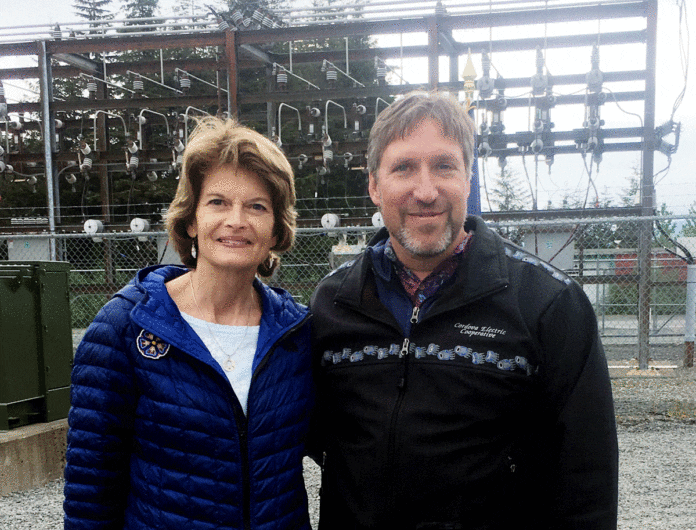
A new energy storage system battery is up and running at the Cordova Electric Cooperative, linking hydropower with storage and the grid, assuring that this major fisheries seaport has all the power it needs in the face of harsh climate conditions.
The official introduction of the energy storage system battery last weekend came during a ribbon cutting ceremony, with participants including Sen. Lisa Murkowski, R-Alaska and Imre Gyuk, program manager for energy storage research at U.S. Department of Energy.
The energy storage system battery is a product of the French company Saft, which specializes in advanced technology battery solutions for industry. Saft is a wholly-owned subsidiary of Total, a leading international oil and gas firm, and a major player in low-carbon energies.

“This particular project will link hydropower with storage and of course with the grid and it will make the grid more stable and save money, and it will be there in emergencies and keep the grid going, even under adverse circumstances” Gyuk said.
“Really what the battery is doing is becoming the electric shock absorber for our whole grid, so it can manage increases and fluctuations in power use in our community,” said Cordova Mayor Clay Koplin, who is the chief executive officer of CEC. “We were using our hydropower to do that, so that new battery that we have is freeing up 500 kilowatts of renewable energy at this project, so our battery project really looks like a hydropower project. Five hundred kilowatts is enough to provide energy to our high school, elementary school, grocery store, hospital and our Cordova community center all at once,” Koplin said, in a televised interview with Anchorage television station KTVA.
The CEC has set a goal to be 90 percent renewable energy by 2025, but Koplin said they have a few projects under way that may help them reach 100 percent renewable energy by that date. The battery project is part of CEC’s grid modernization project RADIANCE, on which the CEC is working with the Alaska Center for Energy and Power at the University of Alaska Fairbanks and Alaska Village Electric Cooperative, plus five universities and three national labs.
Hydropower currently produces 70 percent of Cordova’s energy, with diesel filling the 30 percent gap.
“Hydropower is a key ingredient to Cordova being one of the largest seafood fishing ports in the United States,” Koplin told KTVA. “When we built this project for $24 million in 2002, it stabilized our cost of energy. We were actually able to reduce our cost of energy and that allowed our processors to invest in onshore processing, so we have now become the 13th, sometimes as high as the fourth or fifth largest seafood port in the United States and this available abundant inexpensive hydropower is one of the reasons we got there.”





